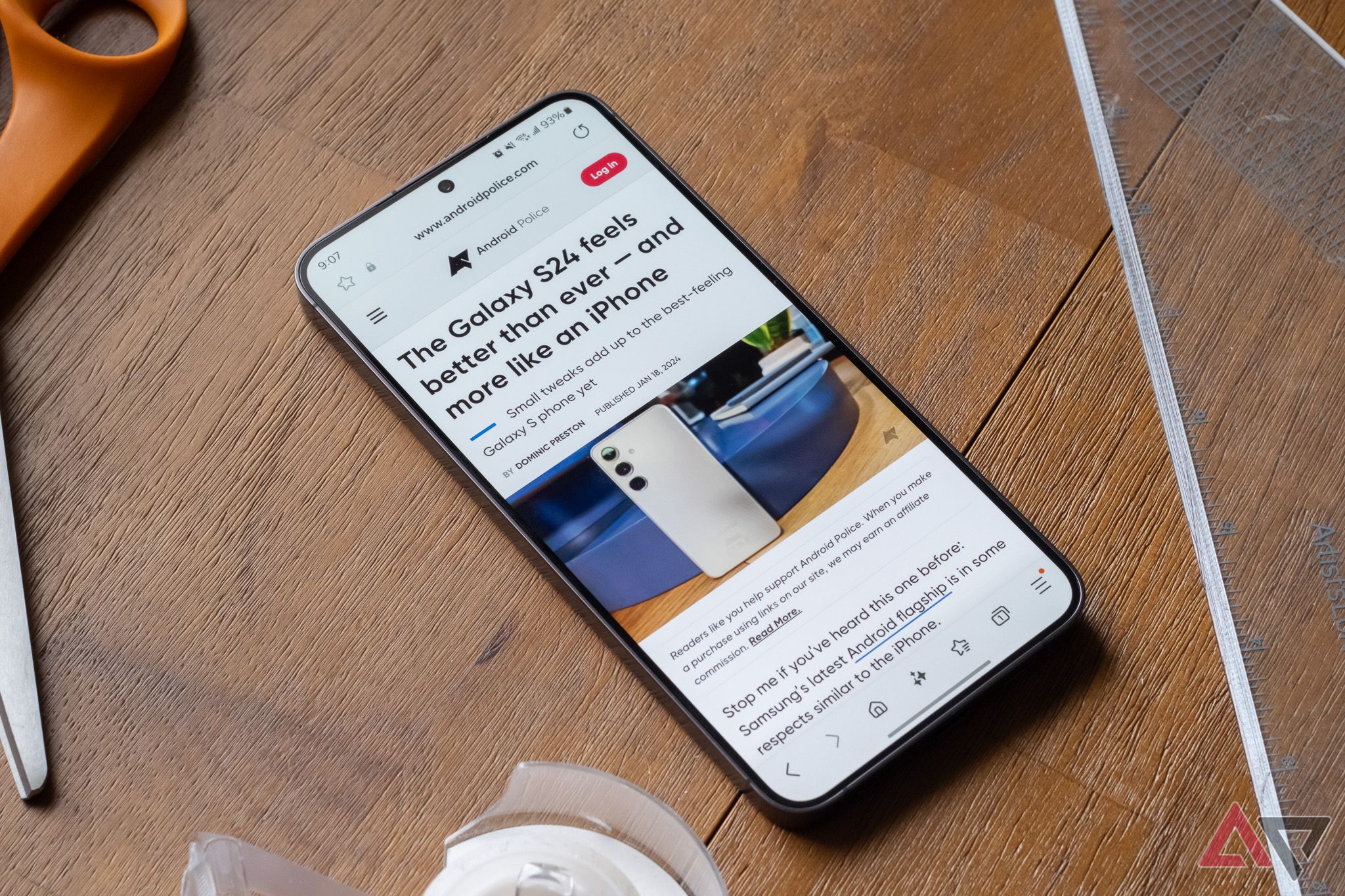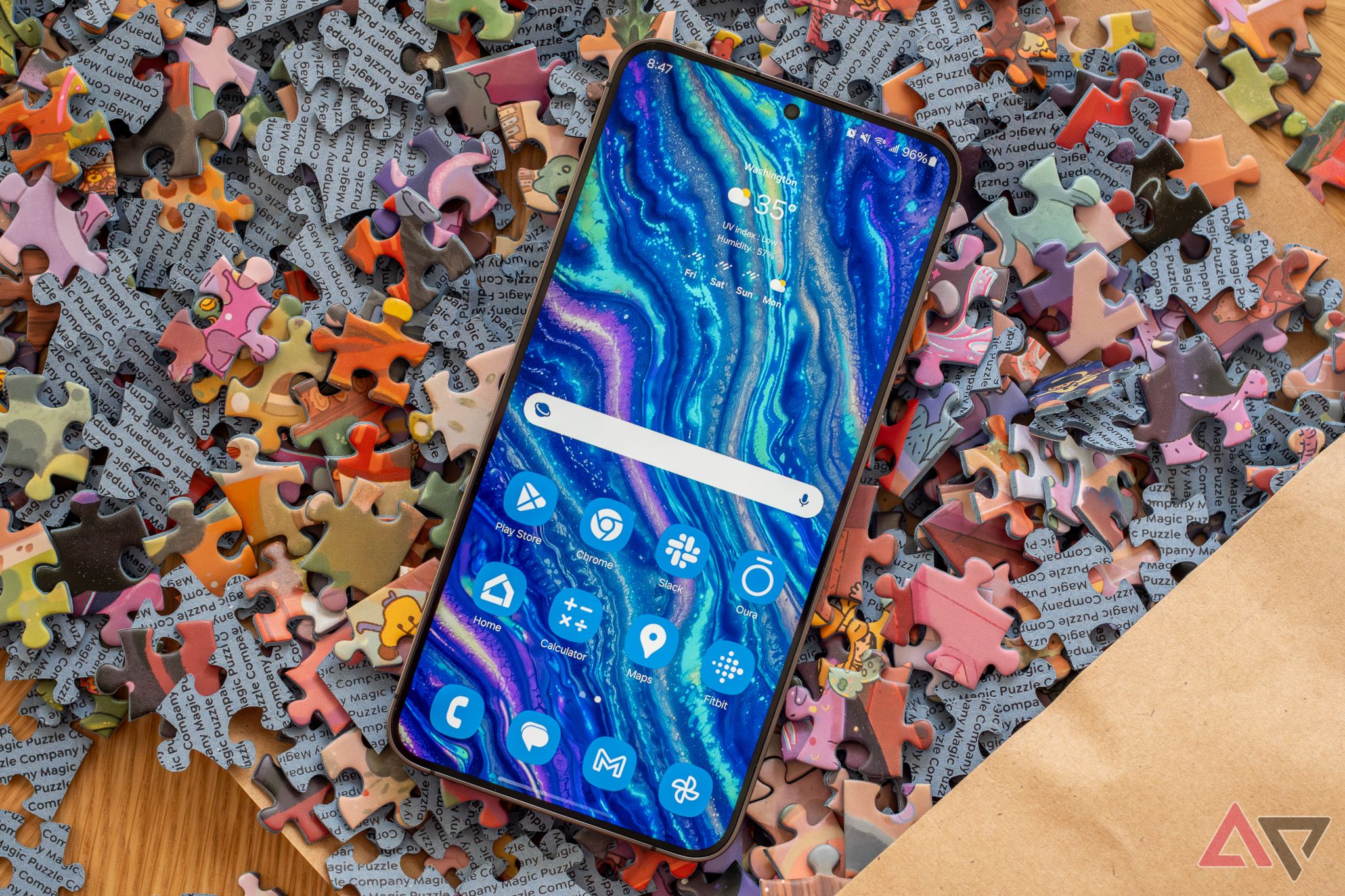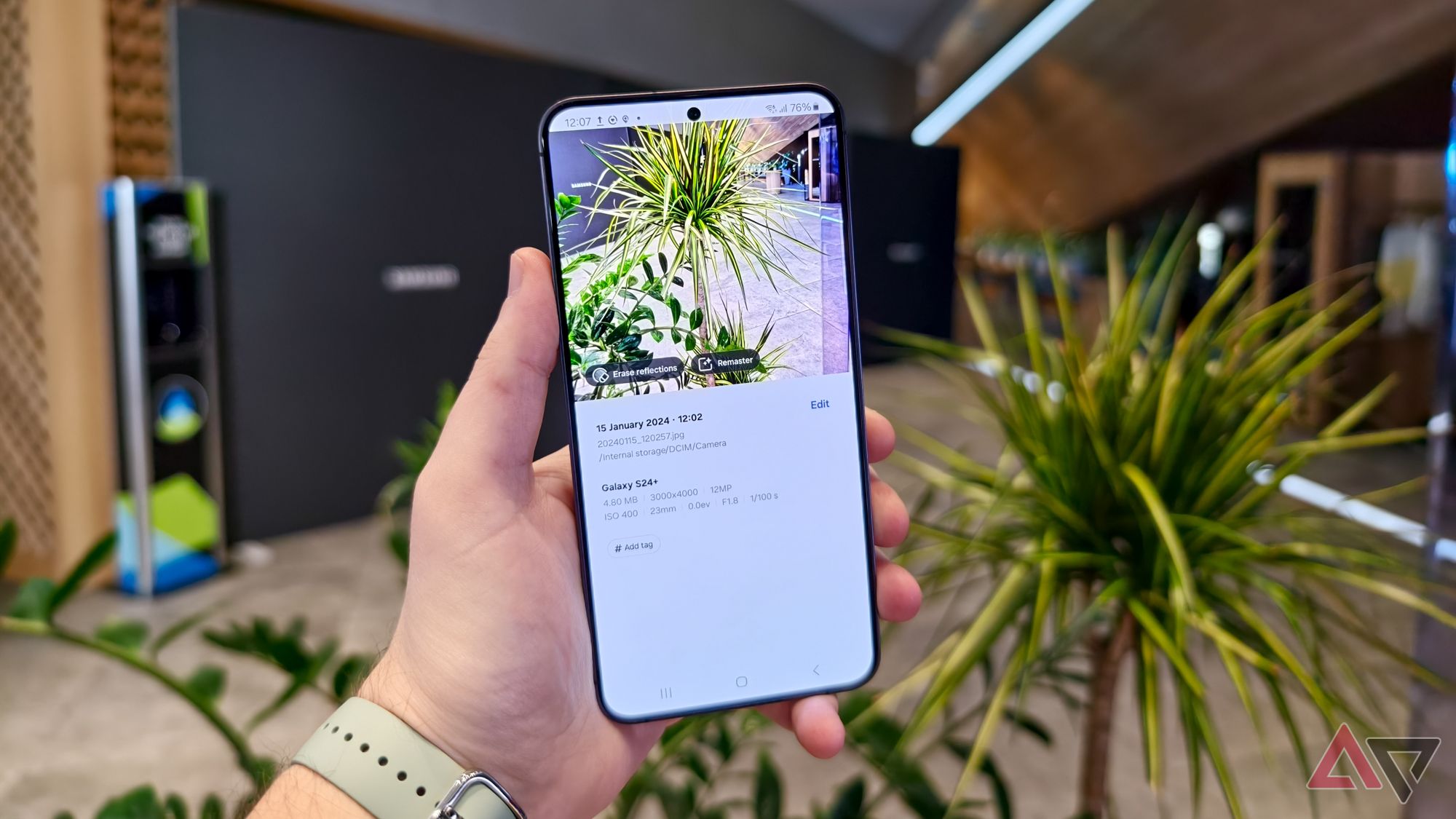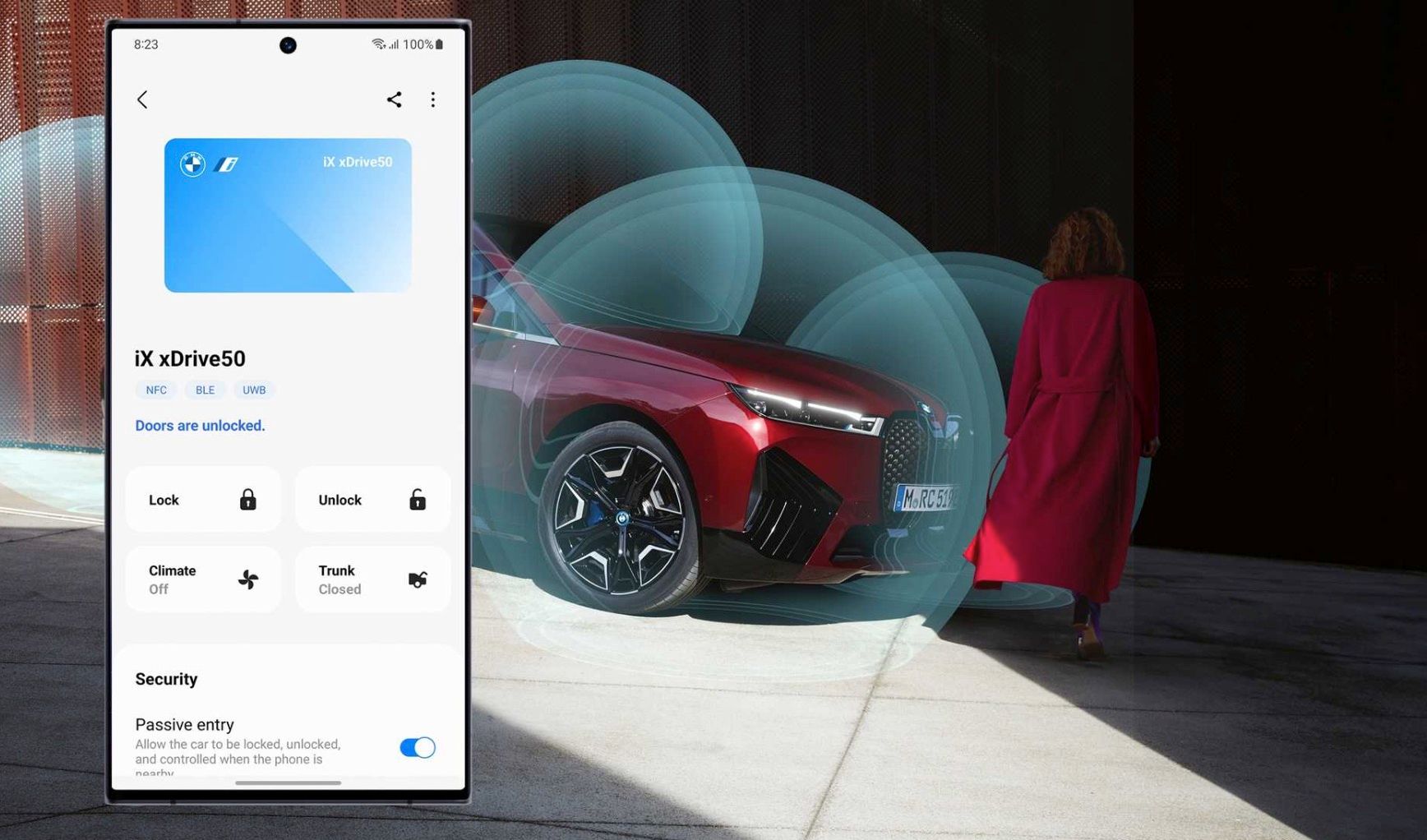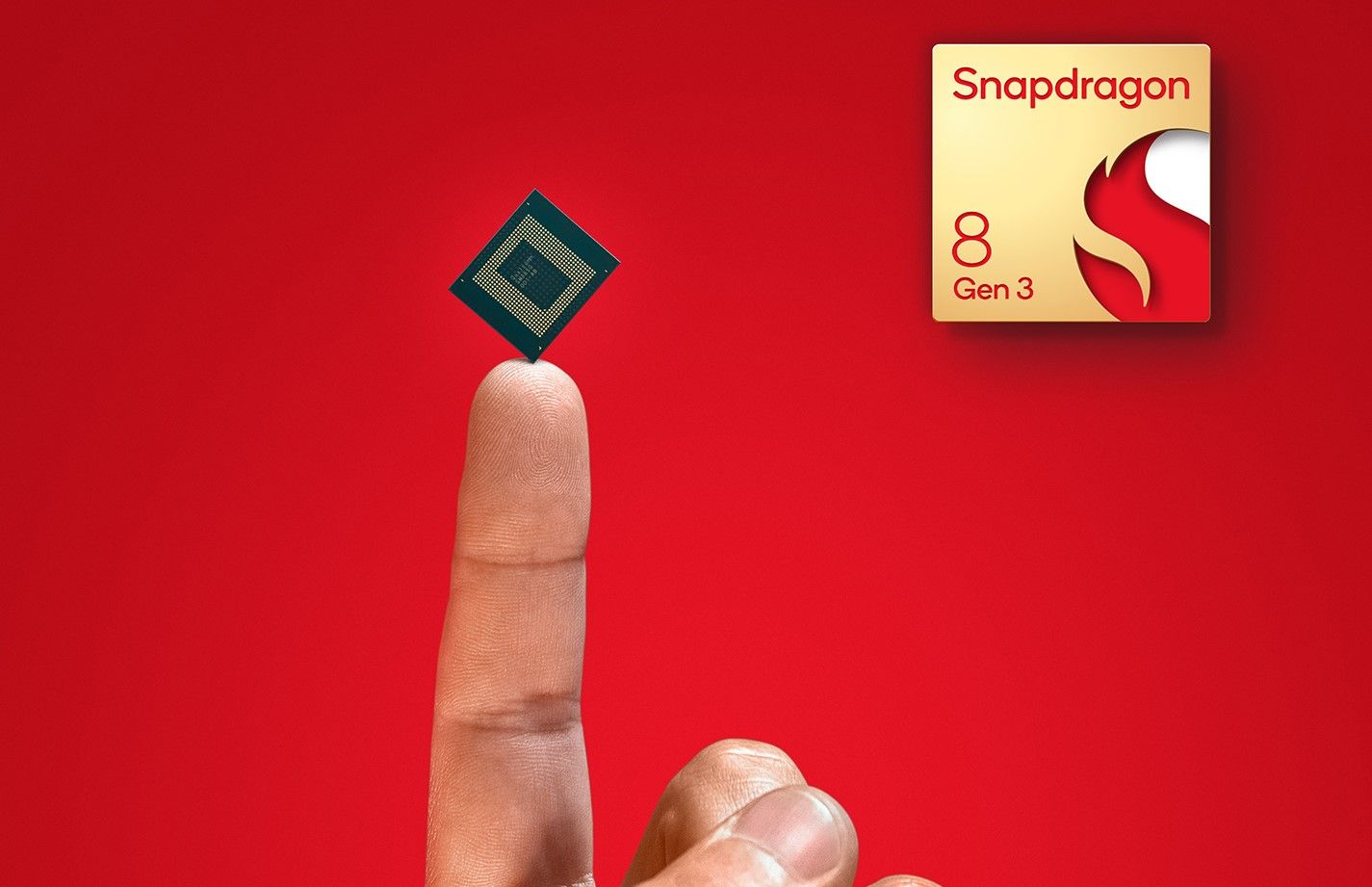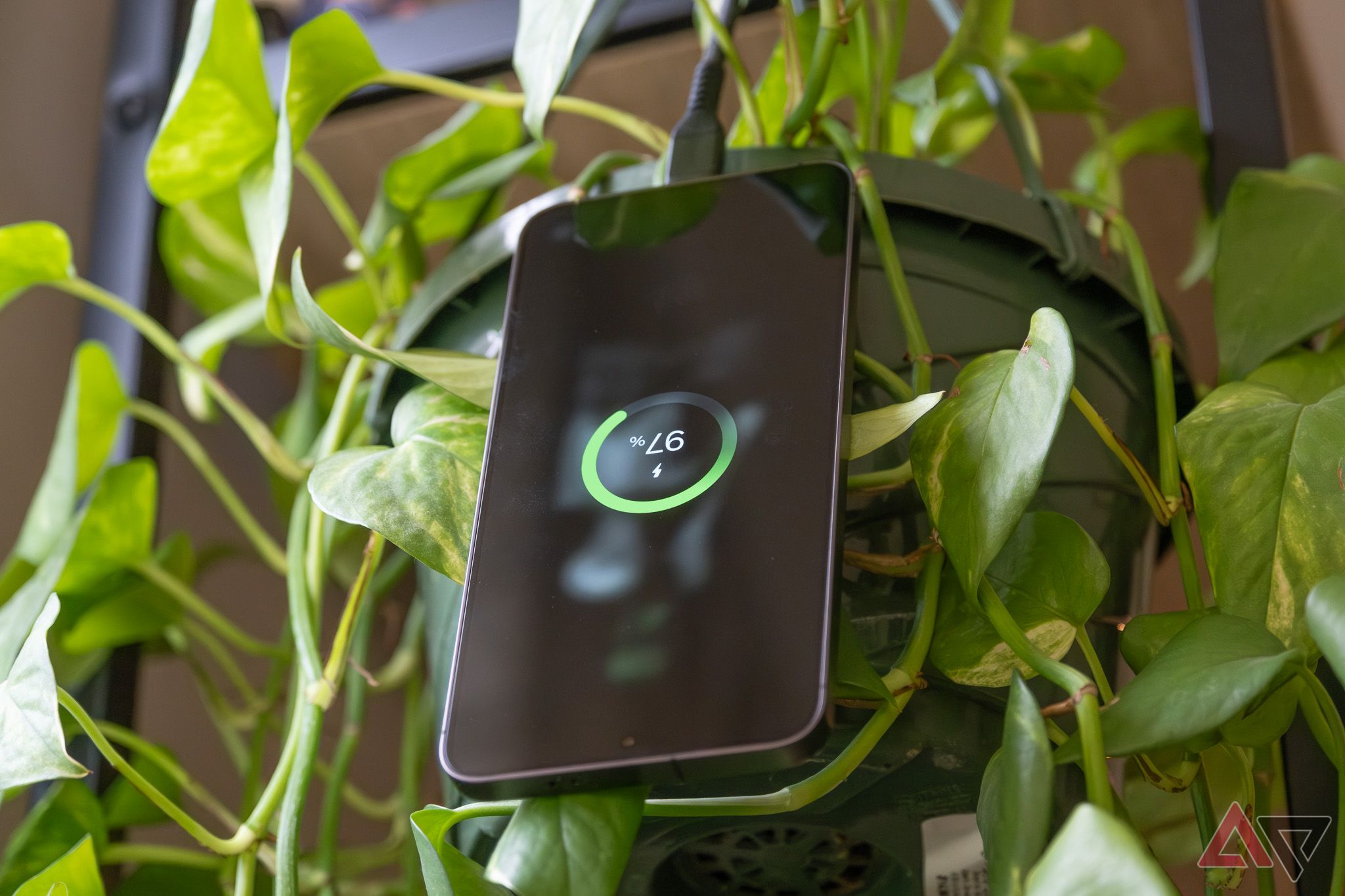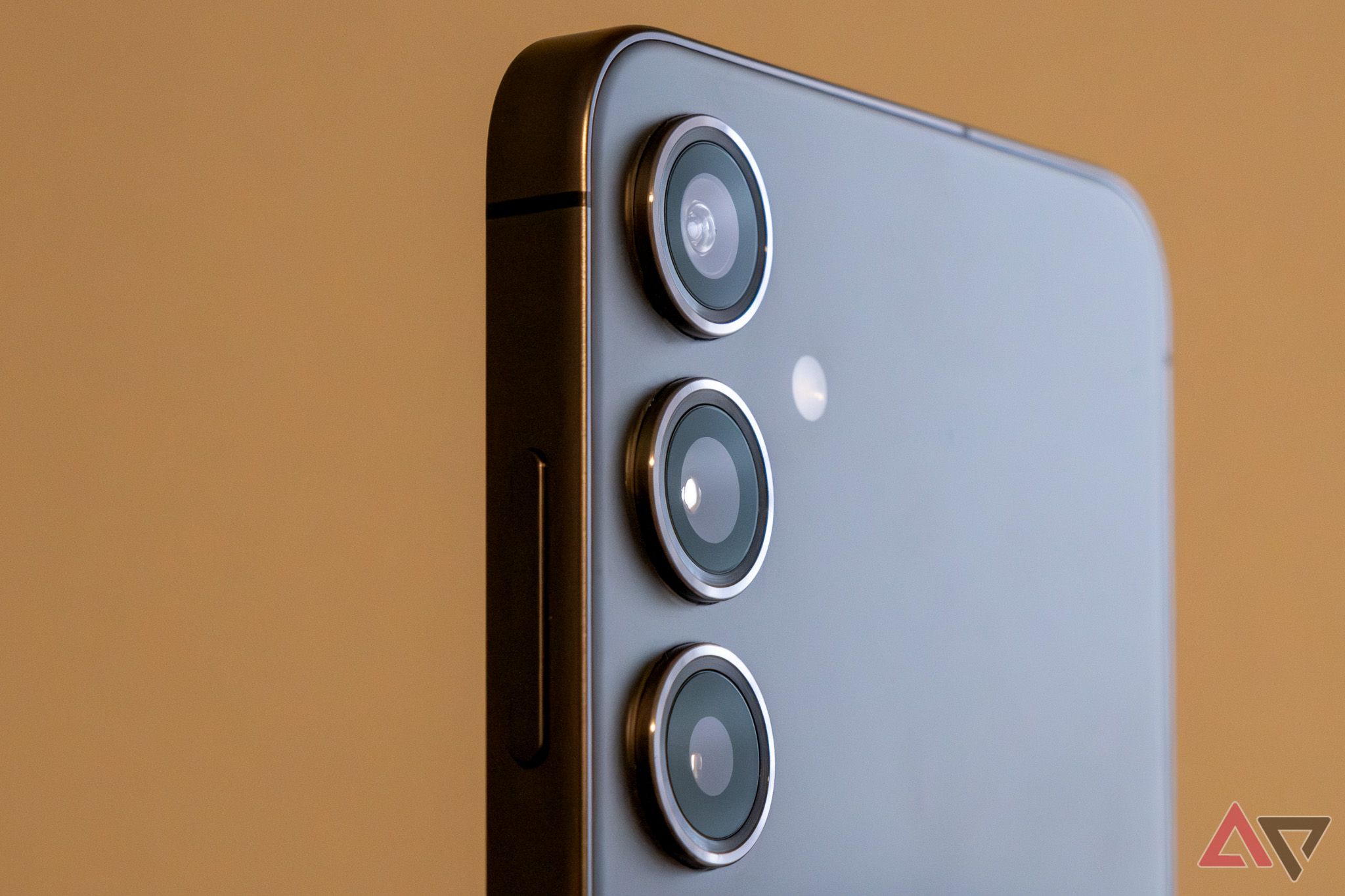-
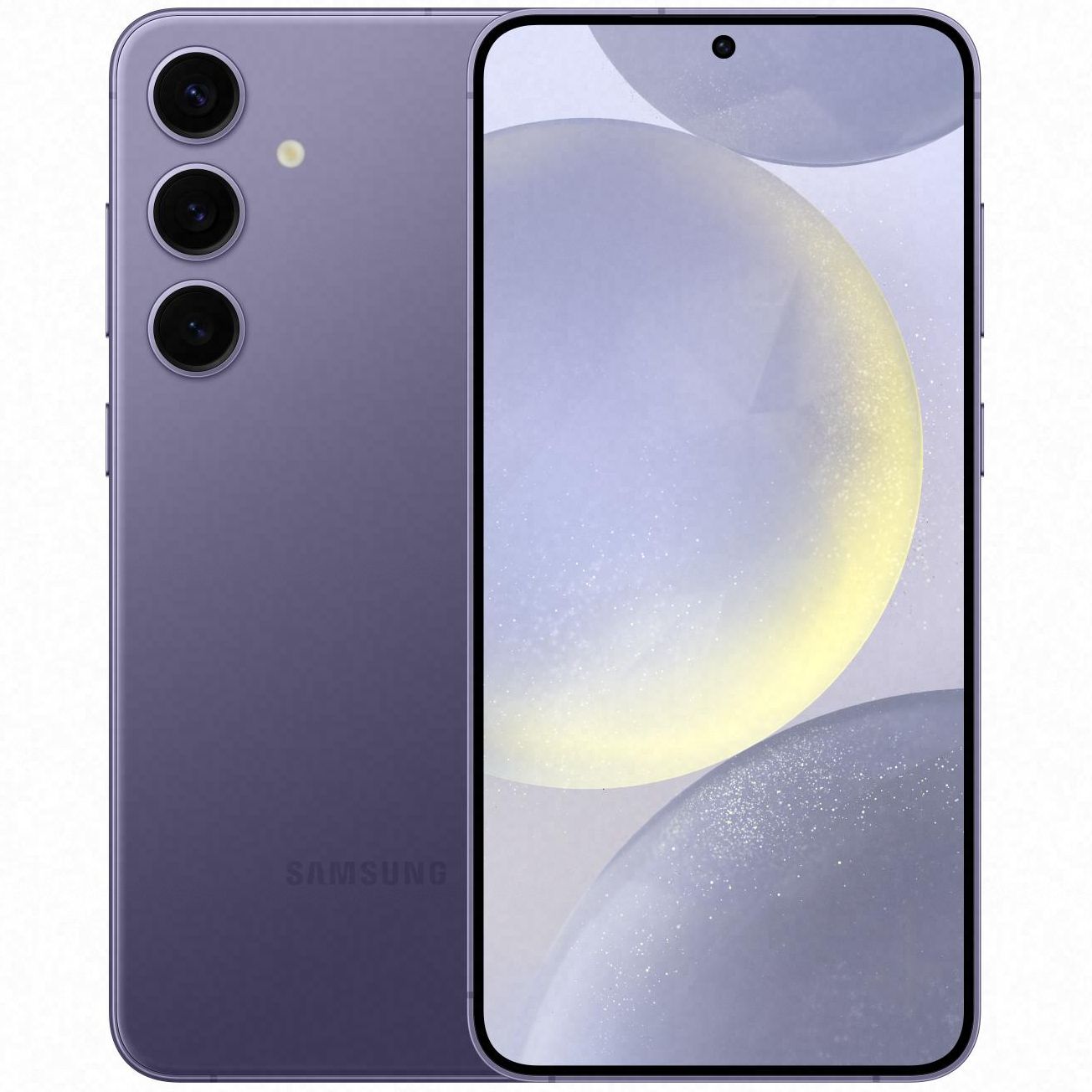
Samsung Galaxy S24+
Powerful versatility
Striking a balance between a big screen and reasonable size, the middle child of the Galaxy S24 lineup is one of the most widely appealing handsets of the year. Its premium hardware, refined design, and renowned software experience make it a great choice for casual and power users alike.
Pros- Exceptional battery life
- One of the best displays on the market
- Seven full Android updates
Cons- Mediocre charging for a flagship
- International models get the middling Exynos 2400 SoC
-
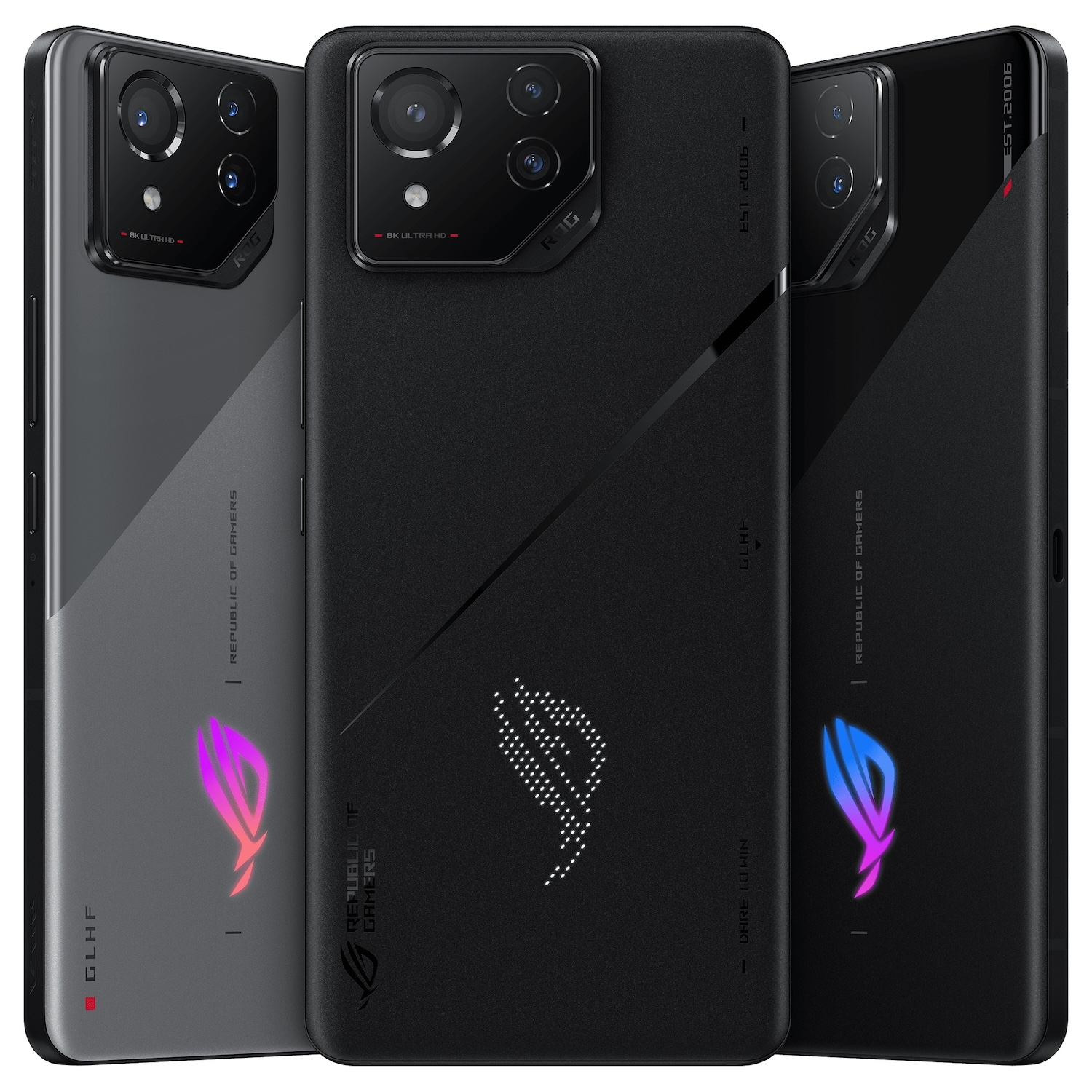
Asus ROG Phone 8
Specialized performance
Aimed squarely at dedicated mobile gaming enthusiasts, Asus’s ROG Phone 8 boasts tons of RAM plus numerous design and software optimizations meant to streamline gameplay. It’s not without its own interesting tweaks, either, like the performance-boosting Game Genie software tool and support for the external AeroActive Cooler X.
Pros- Starts at 16GB of RAM
- Headphone jack and full aptX codec support
- Pressure-sensitive trigger buttons
Cons- Relatively heavy
- Worse cameras
- Far shorter software support
Talk about a tale of two manufacturers. Samsung makes a wide range of phones that largely cater to the broadest markets possible, while the last couple of years have seen Asus garner somewhat of an enthusiast following for its few, thoughtfully engineered devices. Those points ring true with the Galaxy S24+ and ROG Phone 8, with the former delivering possibly the best balance of form factor and usability, and the latter charging ahead with borderline-ludicrous performance specs.
But competing in the increasingly cutthroat flagship smartphone field takes more than just a big screen and fast system-on-a-chip, especially if you want to take on the champ. With that in mind, the ROG Phone 8 has a shot at winning over some demanding gamers and other power users, even if it doesn’t enjoy the same mainstream popularity as Samsung’s mid-level Galaxy S.
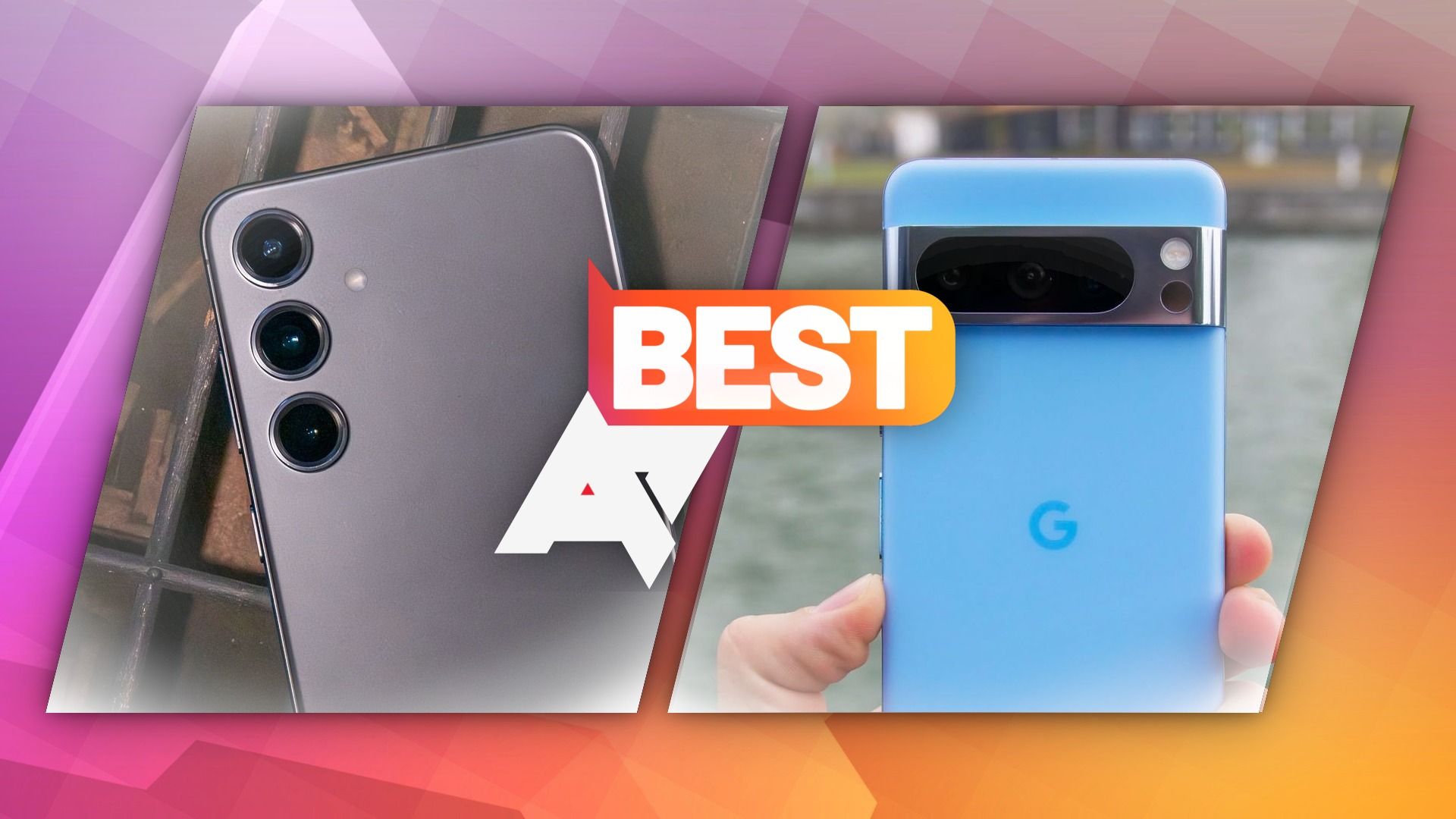
Best Android phones in 2024
In the market for a new phone? Get the best Android experience with these flagship phones
Price, specs, and availability
The S24+ released at the end of January 2024 at Samsung, various carriers, and third-party retailers in all major markets. It costs $1,000, with an extra $120 bumping the device up to 512GB of storage. You can take some of the edge off that figure with a trade-in or carrier deal.
Asus smartphones, including the ROG 8, see much more limited availability. You can get one from Asus’ website or Amazon, and that’s it. There aren’t any carrier tie-ins (it doesn’t even work on CDMA networks like Verizon) and Asus doesn’t offer trade-in discounts. So, if you want this high-end gaming phone, you’ll have to pay up.
Interestingly, there’s only one ROG Phone 8 configuration — sort of. If you want more than 256GB of storage, you’ll need to shell out an additional $100 on top of the $1,100 base price, and technically, that’ll upgrade you to the 16GB/512GB ROG 8 Pro. Another $300 adds 8GB of RAM and the phone’s mated AeroActive Cooler X, for the absolute most demanding gamers. Other than a differing rear LED layout and purpose, though, the two phones are identical.
-
Samsung Galaxy S24+ Asus ROG Phone 8 SoC Qualcomm Snapdragon 8 Gen 3 for Galaxy (US), Exynos 2400 (International) Qualcomm Snapdragon 8 Gen 3 Display type AMOLED, 1-120Hz LTPO AMOLED, 165Hz Display dimensions 6.7″ 6.78-inch Display resolution 3120 × 1440 1080 x 2400 RAM 12GB 12GB, 16GB, or 24GB Storage 256GB or 512GB 256GB, 512GB, or 1TB Battery 4,900mAh 5,500mAh Charge speed 45W wired, 15W wireless 65W wired, 15W wireless Charge options USB-C wired, Qi wireless USB-C wired, Qi wireless Ports USB-C 2x USB-C, 3.5mm headphone jack SIM support Nano-SIM and eSIM Dual Nano-SIM Operating System Android 14 and One UI 6.1 Android 14 Front camera 12MP, f/2.2 32MP, f/2.5 Rear camera 50MP, f/1.8 OIS main; 12MP, f/2.2 ultrawide; 10MP, f/2.4 telephoto (3× zoom) 50MP, f/1.9 main; 13MP, f/2.2 ultrawide; 32MP, f/2.4 telephoto Cellular connectivity 4G LTE, 5G (sub-6 and mmWave) 4G LTE, sub-6 5G Wi-Fi connectivity Wi-Fi 6e, Wi-Fi Direct Wi-Fi 7 Connectivity NFC, UWB NFC Bluetooth Bluetooth 5.3 Bluetooth 5.3 Dimensions 158.5 × 76.2 × 7.6mm 163.8 x 76.8 x 8.9mm Weight 196g 225g IP Rating IP68 IP68 Colors Onyx Black, Marble Gray, Cobalt Violet, Amber Yellow, Jade Green, Sapphire Blue, and Sandstone Orange Rebel Grey, Phantom Black Stylus No No Price $1,000 From $1,099
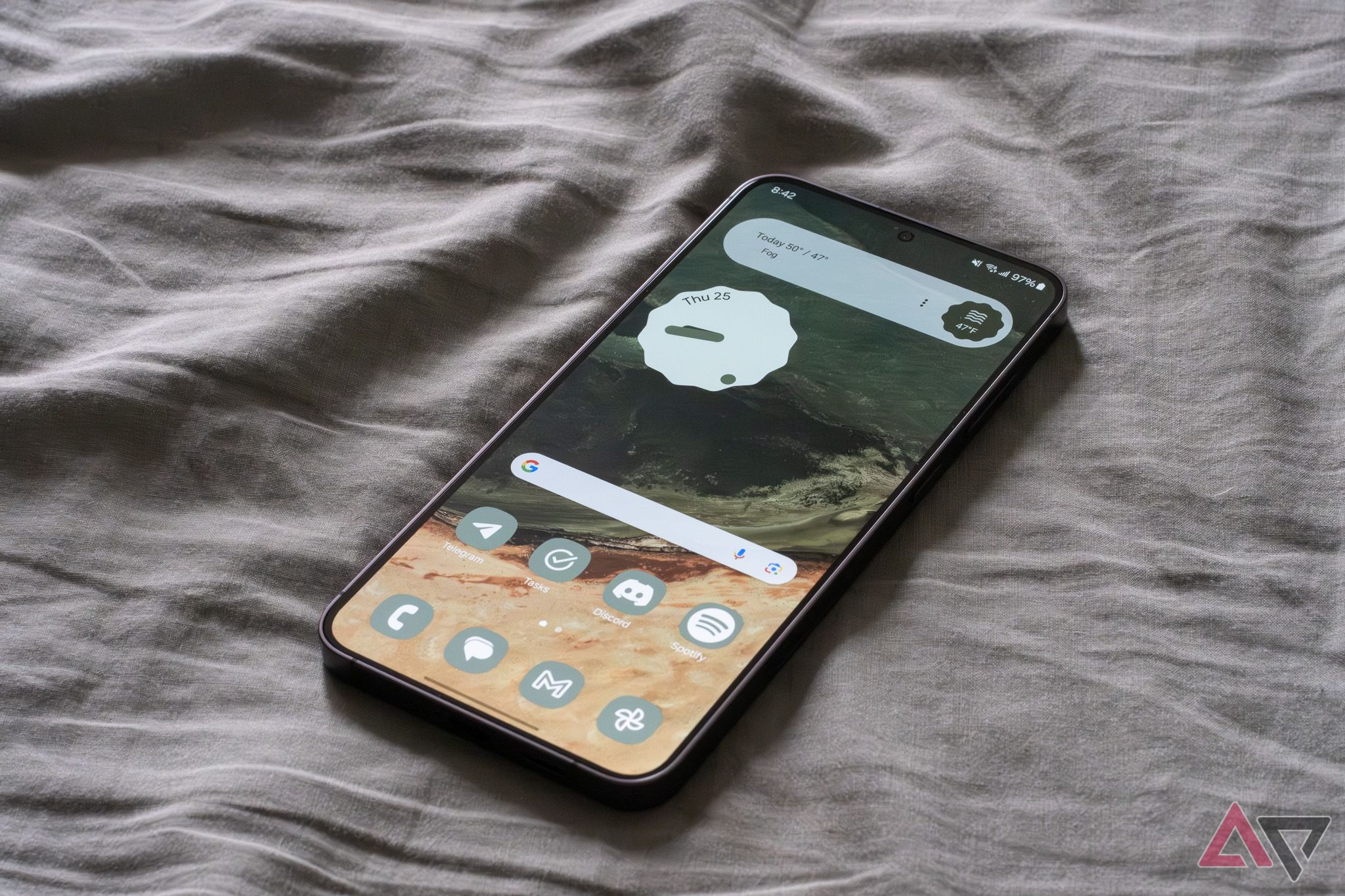
Samsung Galaxy S24+ review: A safe bet
AI gimmicks aside, this is a very easy-to-recommend flagship
Design
Do you want to blend in, or stand out?
Samsung’s flagships have devolved into essentially featureless bricks that, while offering a luxurious feel and professional appearance, don’t come off as particularly memorable. Of course, while there aren’t any standout visual cues, there’s also nothing distracting, aggressive, unnatural, or ugly about the S24+. We like the colors quite a bit — especially the Samsung exclusives — and the whole thing looks and feels like a premium electronic device.
The ROG Phone 8 exists at the completely opposite end of the spectrum. While not quite as gaudy as the lights on the Pro model, the Phone 8’s rear-mounted LEDs make it clear this is a gaming device, as does the camera bump’s angular styling. But the Asus brings some interesting (and some questionable) design decisions other than simple appearance.
The most interesting is the AirTrigger feature, which Asus calls its pair of pressure-sensitive touch shoulder buttons that mimic a console controller layout. Then there’s the side (power-only) USB-C port, which makes it considerably more comfortable to play games while it’s plugged in. With respect to USB ports, the main one (on the bottom of the phone) got pushed to the side a bit by the crowded selection of headphone jack, microphone, speaker, and SIM slot. Luckily, some aftermarket peripherals (like the excellent Razer Kishi) manage to work around this, despite requiring fixed, wired connections.
From a physical standpoint, both phones are rated IP68 and prove about as durable as you could hope for. They also use Gorilla Glass Victus 2, with its impressive balance of scratch and crack resistance. Unsurprisingly, however, the more performance-oriented Asus device is 1.2mm thicker and 28g heavier, in addition to 5.3mm taller.
Display
Asus makes no compromises and takes no prisoners
The Galaxy S24+ has a great-looking screen with excellent brightness, good colors, and fluid motion. We loved it on release, and most buyers will be satisfied. But it’s not without issues, as Samsung apparently opted for a less colorful default panel profile, leading to complaints of washed-out colors across its entire S series. Since that snafu reared its head, though, Samsung has offered some software updates that appear to have helped, if not squashed the issue entirely.
But the ROG Phone is all about gaming, which calls for the absolute best visuals possible. Its display mostly delivers, with exceptional color breadth spanning 110%+ of the DCI-P3 gamut — higher in hands-on testing, in fact, than the 107% claim Asus itself makes. It also slightly edges out the S24+ in peak manual-mode brightness, and wallops it by 300 nits when using automatic brightness. It even sports an overclocked refresh rate that, with the assistance of Asus’ Game Genie software (gee, that name sounds familiar), can reach 165Hz for the smoothest handheld gameplay possible.
Physically, the two screens are quite similar. Both sit within consistent, slim bezels and rock a center-aligned punch-hole camera at the top. But the ROG Phone’s selfie camera punch-out has more significant implications than the Galaxy’s. Asus made it extremely clear this package is designed for playing games, then decided to poke a hole in the edge of the touchscreen where some games place parts of the HUD or touch control schemes. It’s a confusing move to say the least, and one of few questionable design decisions on this outwardly gaming-centric device.
Software
Two disparate focuses with two satisfying outcomes — and a caveat
Much has been written about the wealth of useful features and customization options offered by Samsung’s OneUI, which is one of the many great selling points of the Galaxy S series. Its intuitive out-of-the-box implementation has a surprisingly small learning curve despite being pretty different from stock Android. It gives casual and power users the leverage to tailor their daily experience precisely to their needs.
Asus doesn’t use quite as heavy a hand on its Android skin but does let users make worthwhile changes. ZenUI doesn’t get a ton of press (partly because there just aren’t as many Asus phones in the wild), but its lightweight interpretation of the world’s top computing platform makes smartphone use convenient and efficient. It’s especially easy to implement some of ZenUI’s most appreciable customizations, and just as simple to switch back to the stock arrangement if you end up not feeling the changes.
Of course, the real story with any purported gaming phone is how well it handles resource-intensive, graphics-forward apps, and the ROG 8 does a good job there. Asus’ closely intertwined Game Genie overlay interface and Armory Crate game launcher work together in delivering convenient, performance-oriented app management, letting you set per-game performance modes and, for example, launch specific titles centered within letterboxing to keep the mystifying punch-hole cutout from getting in your way.
Of course, nothing’s stopping you from gaming on the Galaxy S24+, which sports similar (if not quite as barn-burning) hardware and overall performance. But ROG’s control and performance management, and particularly its console-like air triggers, really drive home the phone’s purpose. If you’ve never used a purpose-built gaming phone before, you’ll find the ROG a refreshingly fun piece of hardware.
Let’s talk about AI features
I’m even getting annoyed by my constant mockery of the current AI feature market, so I’ll try not to be too cynical. Samsung’s Galaxy AI push may have come about well after Google broke the dam on machine learning-based smartphone tools, but its novel software tricks often work at least as well, and sometimes better. Its image and video touch-up tools are still developing, but features like Circle to Search and AI Voice Recorder summary and transcription work impressively well.
Leaders like Samsung and Google will undoubtedly continue to refine and expand AI toolkits to stay on top of the Android software market. We’re extremely skeptical of the vision for a premium, subscription-based AI landscape, but at least there’s a long-term roadmap. While what we call AI features are nice, they’re often barely distinguished from more typical software tricks, and we don’t foresee most users shelling out monthly payments to keep the OS from restricting relatively minor features.
Asus hasn’t announced any AI subscription plans, but interestingly, does intend to launch a series of AI-focused standalone PCs in 2024 that utilize powerful local processing to enable advanced content creation. Compared to somewhat overhyped local smartphone AI and cloud-dependent external ML processing, desktop AI smarts actually make considerable sense and could show promise moving forward.
Back to the pocket-size powerhouse, though. Asus’ AI Call Translator brings us closer to Douglas Adams’ Babelfish than ever, alongside AI noise reduction, voice transcription, Minority Report-style HyperClarity photo enhancement, and text-based Semantic Search within users’ own galleries. The Galaxy S24 series offers nearly identical features, but it’s worth pointing out Asus isn’t far behind.
Android digital car key on Samsung phone
The S24+ is also one of the currently rare phones with UWB connectivity.
The ROG’s AI gaming features make things a little more interesting. Its in-game awareness leverages pattern recognition to make grinding for loot, conversing with teammates, and streaming gameplay easier than ever. It’s an interesting use of the technology that even old desktop gaming curmudgeons like myself find intriguing. It looks like AI is here to stay, and it’s probably a good thing overall.
Two largely opposed Android update philosophies
Following Google’s lead, Samsung flagships now offer 7 years of Android updates. We’re big fans of this policy and wish more manufacturers would copy it. Samsung delivers its updates shortly after new Android versions go live, and usually does a good job of releasing streamlined, bug-free builds.
Asus doesn’t suffer from consistent or major bugs or other snafus, but provides just two full Android updates for its phones across the board. That’s a little disappointing given the ROG 8’s fantastic hardware, but you’ll still get at least two years of security patches and generally effective use out of it. Unfortunately, Asus also isn’t exactly known for timely updates, keeping users waiting an additional 2 or 3 months longer than the competition for the latest OS iteration.
Performance
Asus goes all out once again
Source; Qualcomm
The Snapdragon 8 Gen 3 SoC inside both phones gets rave reviews for performance and efficiency. Interestingly, they use different versions, with the Galaxy chip sporting a marginally higher clock on the primary Cortex-X4 core (at 3.39GHz vs. the ROG’s 3.3GHz) at the expense of a minor, 0.1GHz downclock for the rest of the cores. But even benchmarks will be hard-pressed to illustrate the difference.
Samsung’s S24 family certainly stands poised to work effectively throughout its 7-year lifespan. Even as it reaches its end of life, it’ll likely still perform at least as well as the midrange phones of the future. In day-to-day use, it is and will remain a powerhouse, and you’ll get great frame rates in even demanding games like Genshin Impact.
As you might expect, the ROG Phone goes a step further. Its Game Genie layer enables 165Hz gameplay in supported titles, and the extra 4GB of RAM compared to the Galaxy will make even more of a difference as games inevitably get more resource-intensive in coming years. Then there’s the 24GB of RAM in the ROG 8 Pro, which stands to satisfy the most memory-hungry applications imaginable for the foreseeable future.
Suffice it to say that both of these phones lead the pack in terms of performance. The Asus does come out on top, but you’ll have a hard time telling the difference outside resource-intensive games.
Battery
The ROG excels, but the Galaxy doesn’t exactly fall short
A Galaxy S24+ suspended from a hanging plant while charging
A few years ago, we decried the S22 family’s less-than-stellar battery life, but SoCs and software have come a long way since then. During our review period (which typically proves pretty hard on a battery), we didn’t even manage to empty the battery in a single day once. Light use can easily stretch the battery to 48 hours.
Interestingly, though, the S24+ actually doesn’t quite live up to its predecessor in some cases. It’s only marginally shorter for common cases like streaming video and general usage, but if you do plan on gaming, it’ll run out as much as 2.5 earlier than the S23+.
Of course, Asus went to lengths to cater to demanding use cases, and its 5,400mAh battery can handle roughly 10 hours of gaming, easily enough to make your way to a charger for a top-up. And when you do plug it in, you’ll benefit from 65W charging, although the included charger only goes up to 30W. (The Phone 8 Pro comes with the full-on 65W charger.)
Samsung, on the other hand, continues to equip its entire flagship lineup with supposed 45W charging. We’ve criticized this more than once in the past for its low peak and the short period it can actually attain that speed, but truth be told, the real-world difference isn’t that stark. The ROG Phone’s 65W rate results in a roughly 45-minute wait from empty to full, while the S24+ manages the same in about an hour. The ROG’s higher charging speed mostly affects the usefulness of quick top-ups when you’re already above 50% or so, as the Galaxy progressively slows charging just a bit more. But given the Samsung’s already great battery life, the moderate peak charging isn’t a huge knock.
Cameras
Some hits, some misses, but they’re both good
Samsung’s flagships typically rate among the best phones for photography, and the S24+ upholds that legacy. We’re pretty critical of smartphone cameras (because so are many of our readers), and we have pointed out some specific issues the S24 series camera could improve upon. Overall, though, we actually don’t hate the slightly oversaturated color palette, and it captures an excellent dynamic contrast range (even better than the S23 series).
Mostly good pictures, but note the blurry dogs and bus.
Where demanding photobugs will take issue is with low-light environments and high-speed subject capture. The S24+ camera isn’t terrible in the dark, but does tend to overemphasize some mid-tone highlights whether in full-on auto night mode or even taking pictures around dusk in normal mode.
Our biggest complaint revolves around simply getting crisp shots of objects in motion. Whether it’s a dog spinning in a circle or a bus slowing to a stop from 10MPH, we repeatedly came up with blurry shots on the first try. Performance isn’t so bad as to be unusable, and a second, more focused snap often resolved the issue, but you don’t usually have a second chance to capture live action. To make matters more frustrating, this is not a new issue for Samsung and ostensibly stems from image processing rather than hardware shortcomings. Here’s hoping Samsung can get it together soon, because it’s not the best look from the Android industry leader.
The ROG Phone 8 shoots better photos and videos than any other gaming phone.
Asus doesn’t exactly push its camera performance, but it does a good job. It’s held back by a slightly narrower contrast range and a disappointing tendency to oversharpen details that result in a slightly noisy, unnatural effect. Luckily, it’s mostly apparent only when pixel peeping, which is an easy way to convince yourself pretty much any smartphone camera stinks.
While the gaming phone’s primary lens won’t best the top camera phones (it’s not meant to), and should satisfy all but the pickiest users. It’s arguably even better in low light, where the Galaxy continues to struggle. The ROG’s excellent hardware and impressively intuitive — yet also quite thorough — camera controls make it clear Asus is taking camera performance seriously.
With that said, though, the selfie cameras prove that specs aren’t quite everything. Despite the ROG Phone 8’s 32MP front sensor capturing vastly more pixels than the Samsung’s 10MP selfie lens, its output isn’t quite as colorful or detailed. It also lacks autofocus, a frustrating exclusion on such an expensive phone.
Wins for Asus in video, telephoto modes
Both phones sport 3× telephoto lenses, but they’re pretty different. Samsung’s 10MP sensor works well in anything from moderate to bright light, with plenty of detail, perfect white balance, and good contrast (if noticeably lower than the primary lens). But Asus 32MP telephoto camera and competent zoom implementation make it great for long-distance shots. In fact, you could argue the telephoto lens actually captures better images overall than the primary lens in many cases. Unfortunately, the ROG’s telephot lens is limited to 1080p video, compared to the Galaxy’s 4K capability.
Speaking of taking cameras seriously, Asus’ main lens boasts six-axis hybrid gimbal video stabilization, delivering more consistent recordings than anything not made by Apple. Just like we didn’t notice any blurry photo problems with the ROG, we definitely had no complaints about video clarity or stability. The same can’t quite be said of the Galaxy.
Which is right for you?
Sometimes the answer to, “Which phone is best?” calls for a nuanced answer with pros, cons, and caveats, but this one’s pretty straightforward. The Galaxy S24+ comprises just about the most complete phone package we’ve seen for $1,000, with few shortcomings and plenty of great hardware and software choices. If you don’t plan to spend long hours grinding away for loot or experience points, Samsung’s midsize flagship is probably your best bet.

Samsung Galaxy S24+
Best overall
A great flagship phone for nearly anybody
Samsung’s well-rounded middle child blends high performance, refined software, novel AI features, and a fashionably minimalist design to check in as one of the year’s best phones. Outside a couple of camera quibbles, there’s almost nothing to complain about.
And in the other corner, Asus’ gaming phone promises to appeal mostly to, well, gamers. Its performance slightly exceeds the S24+ in the most extreme cases due to more RAM, better cooling, and gaming-centric software optimizations, which you won’t notice if you normally just play Candy Crush. The added charging port, battery life, game software interfacing, and AirTrigger controls make it one of the best gaming phones today.

Asus ROG Phone 8
The niche choice
Pointedly engineered for the most demanding mobile gamers
Asus pulls out most of the stops with its latest gaming phone, offering today’s top hardware, including a super-bright screen and tons of RAM. It even looks a little less gaudy than previous ROG phones, providing a more streamlined game management approach.
Source link

